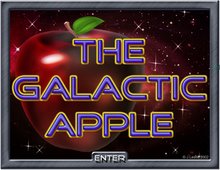 Nearly a year ago I was introduced to a 'new to me' game by my seven year old niece, Ellie, and she promptly swept the floor with my ego! She also got me hooked!
Nearly a year ago I was introduced to a 'new to me' game by my seven year old niece, Ellie, and she promptly swept the floor with my ego! She also got me hooked!Qwirkle is so easy to learn how to play- just match the colors or the shapes. But as you continue playing one quickly sees how sophisticated the game can really be. You see, you cannot repeat a shape in the same color in a row or column. Points are earned for matching colors and shapes, but bonus points are earned when you create a Qwirkle (placing six of the same color tiles- with the six different shapes represented- in a row or column!). This was where Ellie began counting coup!
 A few months ago I was lucky enough to find Qwirkle at a local thrift store (I have been so lucky finding games in tact at Tennessee thrift stores!) and all the pieces were present. It only took a me a few minutes to reread over the instructions before I started up a game with my husband and his Little Bit.
A few months ago I was lucky enough to find Qwirkle at a local thrift store (I have been so lucky finding games in tact at Tennessee thrift stores!) and all the pieces were present. It only took a me a few minutes to reread over the instructions before I started up a game with my husband and his Little Bit.Little Bit is only a couple years older than Ellie and like Ellie took to the game quickly. Little Bit has a brain for mathematics (although she begs to disagree!) and sees the patterns easily. She has trounced me a time or two as well!
Our brains are designed to seek out and find patterns in the world around us and this is a great game to do just that. In addition to the patterning, players are constantly sorting and classifying their tiles to make the best, next move. Qwirkle is worth every bit of the $20-$25 it retails for and I highly recommend this award winning game for kids. Perhaps I'll be lucky enough to find another for $2.99 at the thrift store! Or maybe I'll find the new Qwirkle Trio or Qwirkle Cubes!










